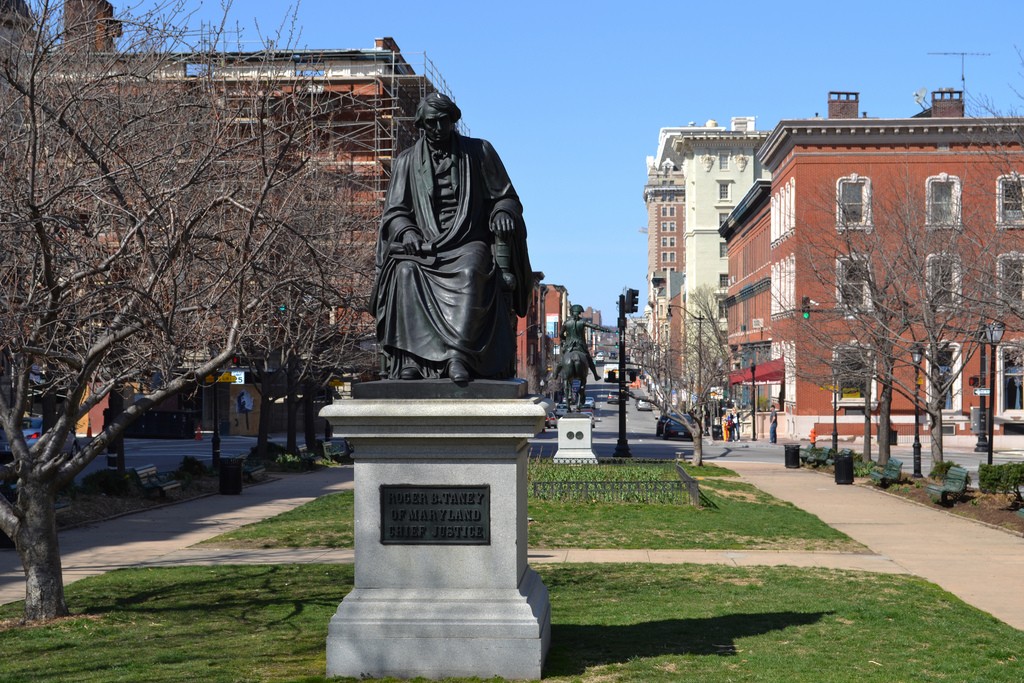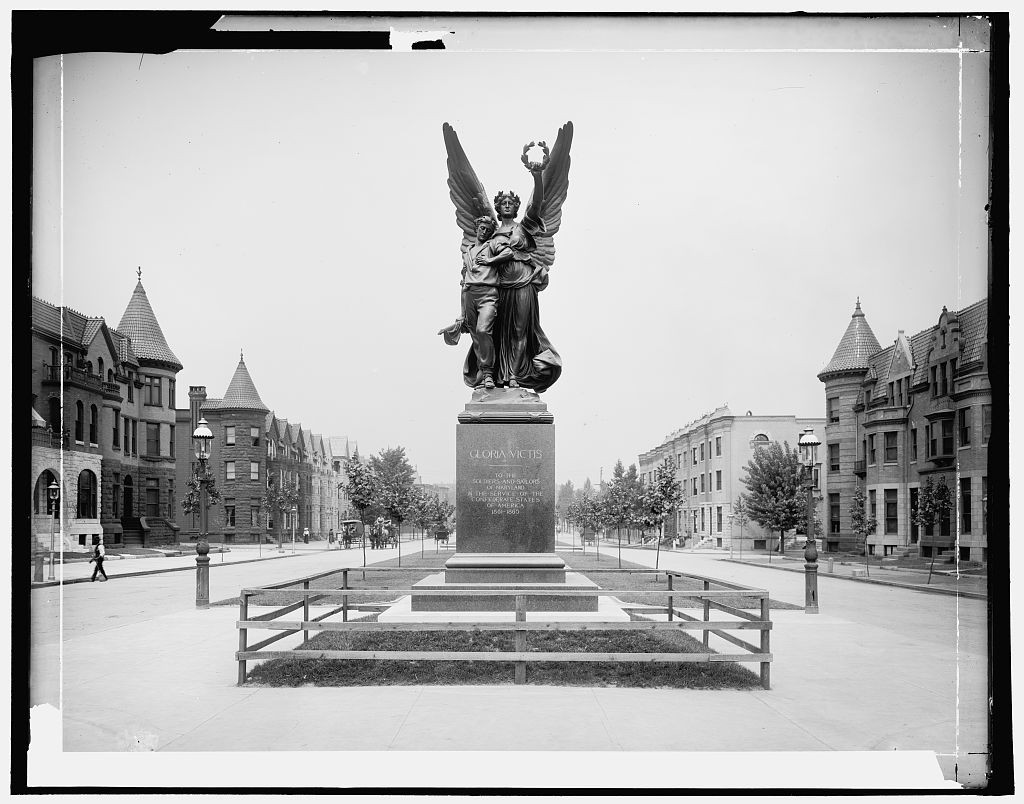Yesterday, Baltimore Heritage attended the first of four meetings for the Mayor’s Special Commission to Review Baltimore’s Public Confederate Monuments. Over the next six months, this commission plans to consider four public monuments:
- Roger B. Taney Monument (1887)
- Confederate Soldiers and Sailors Monument (1903)
- Confederate Women’s Monument (1919)
- Lee-Jackson Monument (1948)
Today’s meeting helped to define scope of the commission’s work and a process for moving forward. The commission is closely focused on these four public monuments—works that are owned by the city and located on public land. They have no plans to address the name of Lake Roland Park (an issue already being addressed by the Baltimore City Council).
Baltimore’s public art collection includes hundreds of statues, memorials and works of art found in neighborhoods across the city. Different works have been donated by individuals or groups, commissioned directly by Baltimore City, or supported by the 1% for art program. The city’s public art collection is managed by the Baltimore Public Art Commission (PAC) and the Commission for Historical and Architectural Preservation (CHAP). Appropriately, the new special commission is made up of four representatives from CHAP, three from PAC, and a representative of the Mayor’s Office. For more on the membership of the commission read the Mayor’s announcement of the membership from September 3.
By January 2016, the commission expects to make a set of recommendations, informed by research, public comments, and deliberation, and laid out in a final report. For each monument, there are a range of possibilities:
- Keep the sculpture as it stands at present.
- Keep the sculpture with specific conditions. Conditions could include a recommendation to install new signage or some other intervention.
- Keep the sculpture in the city’s collection at a new location.
- Remove the sculpture and de-accession from the city’s collection.
Some may recall that this current discussion began in the wake of the tragic shooting in Charleston, South Carolina and the renewed efforts to reject symbols of the Confederacy for their links to white supremacy past and present. In Baltimore, the Confederate Soldiers and Sailors Monument on Mount Royal Avenue was tagged on July 22 with the words “Black Lives Matter”—matching the well-publicized tagging of monuments in Charleston and beyond. A group of activists, including Marvin “Doc” Cheatham and others who had advocated against the Lee-Jackson Monument for years, staged a protest and press conference to draw attention to the troubling meaning of these statues. Mayor Stephanie Rawlings-Blake and city staff quickly responded with the announcement of the special commission on June 30.
Other cities around the country are exploring many of the same challenges. After convening a task force in June, the University of Texas at Austin decided to deal with a set of troubling statues along the Main Mall with the full range of options: moving their statue of Jefferson Davis to UT’s Briscoe Center for American History, relocating their statue of Woodrow Wilson, and leaving four others in place. In Frederick, Maryland officials are considering removing a statue of Roger B. Taney and in Rockville, Montgomery County officials are already considering alternate locations for a monument to the Confederacy located in front of the county courthouse.
Baltimore Heritage supports the Mayor’s leadership in organizing this special commission to consider this issue carefully. We hope the commission meetings provide an opportunity for an open discussion about the legacies of the Civil War and the decades of racial discrimination that followed in Baltimore and across the state. The testimony from city residents today pointed to the importance of this issue to Baltimoreans. One person reminded the commission that the “Spirit of the Confederacy” on Mount Royal Avenue stands just outside the doors of the Midtown Academy and asked: what are we teaching our children? Another speaker, expressed a call for unity urging the commission to seek a more inclusive vision of Baltimore’s history that includes abolition as well as slavery.

We have put together a historic context on Baltimore’s Confederate memory and monuments that we have provided to the special commission and through our new Civil Rights heritage project. We encourage you to read the historic context and get informed about this issue. You can submit your testimony to the commission through their online contact form. The public is also welcome to attend upcoming commission meetings:
- Thursday, October 29, 9:00 am
- Tuesday, December 15, 5:00pm
- Thursday, January 14, 10:00 am
For questions or suggestions, please don’t hesitate to reach out to us and share your views on Baltimore’s Confederate monuments and their future.


This is a teaching moment that be used to the city’s advantage. We hate slavery, but why should we destroy the art that represents it. Why not build an online walking tour telling the history and what the statues represent. If they are gone what will we have to tell their story?
it seems rather odd to destroy the history of the past in a city that has always valued her diversity and raucous reputation. these are, in some cases, works of true art. they should be left as is. justice tawny was, after all, just a man of his time. is our time to be the time of cultural suppression in the name of justice? god I hope not!
Baltimore has the greater problems then confederate monuments , how about addressing the crime, drugs, unemployment, filth, and safety of the people?
Why not take all the rebel monuments and put them in a rebel museum? That way, if you don’t want to see them you don’t have to, and if you want to go look at them, you can. Not everyone wants to honor white supremacy.
Please remove all the Underground RR, Harriet Tubman, and Fredrick Douglas monuments too. Those are a reminder of slavery.